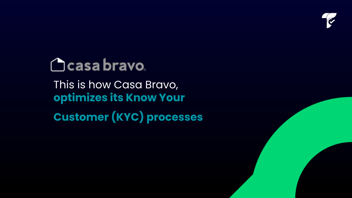In this article you will find:
Customer experience is a decisive factor for success in the increasingly competitive retail sector. What are the main challenges you need to overcome to succeed? I’ll share them in this post!
Customers are the main product of any business—everything depends on them. And their search goes beyond just products; they want connection, relationships, conversations. They seek a smooth, personalized, and satisfying shopping experience at every point of contact with your brand.
Because of this, failing to meet these expectations can result in a significant loss of customers, as bad experiences are quickly shared, especially on social media.
When I refer to bad experiences, I don’t mean something necessarily terrible or catastrophic; sometimes a simple procedure, intended to ensure their own safety, can cause friction.
This is why WhatsApp has become so important, offering a channel that smooths out all your communication.
Today, I’m going to talk about the five key challenges affecting customer experience in retail, with real examples from brands that have successfully faced them, along with suggested solutions to overcome these obstacles.
In this post, you'll find:
- The direct impact of customer experience on profitability and customer loyalty
- Challenge 1: Creating smooth experiences between physical and digital channels
- Challenge 2: Using first-party data to offer personalized experiences
- Challenge 3: Ensuring data privacy and compliance without compromising the experience
- Challenge 4: Adapting to new consumer expectations for effective loyalty
- Challenge 5: Accurately measuring return on investment in customer experience
- Closing the gap: Customer experience as a growth engine in retaill
The Direct Impact of Customer Experience on Profitability and Loyalty
You can’t underestimate the relevance of customer experience in retail, especially in a hyper-competitive environment where products and services have become easily interchangeable.
Differentiation lies in the ability to offer exceptional experiences at every interaction that anticipate and exceed consumer expectations. They demand smoothness and precise personalization, supported by real-time data and robust technological solutions.
A poor handling of any of these points can cause irreparable losses, eroding the brand’s reputation within minutes.
Facing the challenges I’ll mention below is essential because only companies that master these aspects will have the ability to generate long-term loyalty and gain a sustainable competitive advantage.
Here are the five challenges you must overcome to optimize your customers' experience.
Challenge 1: Creating Smooth Experiences Between Physical and Digital Channels
The integration of physical and digital channels is one of the biggest challenges in modern retail due to the intense traffic of consumers in both spaces.
They expect to be able to research a product online, try it in a physical store, and eventually purchase it from their mobile devices or vice versa. This "omnichannel experience" is key to improving their satisfaction.
Real example:
- Starbucks has implemented an omnichannel system where customers can place orders through their mobile app and pick them up in any store.
Additionally, they can personalize their drinks and accumulate loyalty points regardless of the channel they use, creating a seamless experience.
Suggested Solution:
- Implement a platform that synchronizes online and in-store inventories in real time.
- Offer options such as:
- Click & Collect (buy online, pick up in-store)
- Returns through any channel
-
- Unified customer service across all channels, so customers can follow up, ask questions, or manage returns no matter where they purchased the product.
Challenge 2: Using First-Party Data to Offer Personalized Experiences
Effectively using first-party data (data customers directly provide through their interactions with the brand) is essential to personalizing and optimizing your sales process.
However, many companies still don’t know how to make the most of this data to personalize experiences, which can lead to a disconnect between customer expectations and what is offered.
Real Example:
- Nike uses its NikePlus app to collect data on customers' preferences, purchase history, and physical activities.
With this information, they offer personalized recommendations for products and services like workouts and special discounts based on each customer’s individual preferences.
Suggested Solution:
- Invest in advanced CRM systems that allow you to collect and analyze customer data in real time.
- Offer recommendations based on previous customer behavior:
- Personalized product recommendations.
- Exclusive promotions based on purchase history.
- Customized discounts sent through channels like apps, email, or social media.
Challenge 3: Ensuring Data Privacy and Compliance Without Compromising the Experience
With the growing amount of data businesses collect to personalize the customer experience, the challenge arises of ensuring privacy and complying with global regulations such as the GDPR in Europe and the CCPA in California, USA.
Customers are becoming more aware of how their data is used, and a breach of privacy can irreversibly damage trust in the brand.
Real example:
- Apple has taken a strong stance on data privacy. With the implementation of new privacy policies in iOS, they give users more control over the data that apps can collect, promoting transparency and ensuring privacy.
Suggested Solution:
- Adopt clear and transparent policies regarding the use of customer data.
- Implement advanced encryption technologies to protect personal and financial data.
- Allow customers to control which data they share and how it is used.
- Strictly comply with regulations like GDPR and CCPA and keep customers informed of the security measures in place to protect their information.
Challenge 4: Adapting to New Consumer Expectations for Effective Loyalty
With increasing competition and constantly changing expectations, retaining customers has become more difficult than ever.
They have multiple options and are often attracted by immediate discounts or temporary promotions from other brands. Maintaining their loyalty requires more than just simple loyalty programs.
Real Example:
- Sephora created a loyalty program called Beauty Insider that offers not only points for purchases but also exclusive experiences like makeup classes, early access to products, and exclusive events.
This has allowed Sephora to maintain a loyal customer base despite intense competition in the beauty industry.
Suggested Solution:
- Implement loyalty programs that offer more than just points or discounts. Examples include:
- Early access to products
- Personalized services (such as exclusive events or consultations)
- Experiences that foster an emotional connection with the brand, not just price-based.
- Use social media and personalization to keep customers engaged with the brand.
Challenge 5: Accurately Measuring Return on Investment in Customer Experience
A major challenge for retailers is measuring the return on investment (ROI) in customer experience improvements.
Investing in technology, personalization, and staff training can be costly, and many businesses struggle to demonstrate the financial impact of these investments.
Real Example:
- Disney is an outstanding example of how a company can measure the ROI of customer experience.
Through its MyMagic+ system, Disney has enhanced the experience of visitors at its theme parks, allowing customers to manage reservations, tickets, and purchases via a smart bracelet.
Despite the high initial investment, the increase in customer satisfaction and in-park purchases has shown a positive ROI over time.
Suggested Solution:
- Define clear metrics to measure ROI, such as:
- Increased customer retention rate
- Increased purchase frequency
- Improved customer satisfaction (through surveys or feedback analysis)
- Customer Lifetime Value (CLV)
- Use data analytics tools that directly link investments in customer experience to financial results.
Closing the Gap: Customer Experience as a Growth Engine in Retail
Customer experience in retail is undoubtedly one of the most decisive factors for long-term success in any business.
By facing and overcoming the challenges I mentioned in this post, you can create amazing experiences that place you at the top of your customers' preferences, turning them into advocates for your brand.
And to make sure this isn’t a problem, you can count on Truora, which brings the most advanced technology to your hands and your budget
Learn more today about Customer Engagement by Truora and start experiencing next-level customer acquisition and loyalty.




